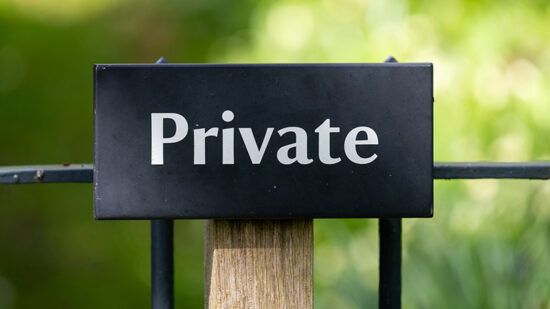Growing concerns over the lack of ambition in the targets set by sustainability-linked bond (SLB) issuers and the absence of use-of-proceeds structures led to a decline in issuance by 53% in 2024 compared to 2023.
The International Capital Market Association states SLBs aim to further develop the key role that debt markets can play in funding and encouraging companies that contribute to sustainability. Given that corporate SLB issuance is concentrated in industries crucial to supporting the transition to a clean, green economy, such as industrials, materials and utilities, there is a clear need for increased financial support in this area.
Although the idea of SLBs is “brilliant”, said Nikko Asset Management’s Holger Mertens in a recent Green Dream video, more work is needed to turn it into a comfortable investment structure for investors – issuers should strive to ensure the targets they set are robust, but regulators also need to cultivate a better environment for SLBs to thrive amidst calls for more transition finance.
Challenges: Weak financial incentives and misleading targets
MainStreet Partners research analyst, Aleksandra Witek, highlighted several challenges the SLB market is currently facing. Firstly, while SLBs are designed to generate environmental and social benefits, investors assess them similarly to conventional bonds from a credit risk perspective, as proceeds are used for general corporate purposes. As a result, there is an increasing need for stronger financial incentives, such as higher coupon step-ups, that would increase the demand for these bonds by offering investors potential extra upside with no additional credit risk.
“Currently, the median step-up is 25bps, which is perceived by the market as too low,” Witek explained. “The first SLBs coupon step-ups were determined at a time when interest rates were low, but markets have experienced a drastic change over the last five years, yet the 25bps step-up remains a common market practice. From the investor’s perspective, these step-ups do not reflect the current market interest rates environment.
“At the same time, investors want to utilise these financial incentives as a tool to prevent issuers from failing their targets, as set by the SLBs. The financial incentive must be high enough to incentivise issuers to meet the targets – making it cheaper versus paying the increased coupon.”
Alongside Witek, Agathe Foussard, fixed income portfolio manager at Mirova, and David Katimbo-Mugwanya, head of fixed income at EdenTree Investment Management, also noted issues with the targets and penalties set by SLB issuers.
“Many SLBs issuers have set targets that are too weak, with negligible penalties compared to the yield they offer, or are callable before the target date, giving an issuer that does not expect to reach its objective an opportunity to repay its bond and subsequently avoid the penalty,” Foussard said.
Misleading KPI reporting and data manipulation is also a concern, Witek continued: “For example, some issuers establish baseline values for targets several years before the bond’s issuance, effectively giving themselves a head start in meeting the KPI, which can undermine the credibility of sustainability-linked commitments. The easily achievable targets are ‘business as usual’ for the issuers, which deviates from the SLBs principle of having a sustainable contribution in addition to the financial returns.
“One thing the market wants to see more, is the increased scope of KPIs. The most common targets revolve around Scope 1 and 2 emissions, while Scope 3 emissions remain often overlooked. More ambitious targets would prove the issuers’ objective of achieving the KPI, especially if the KPIs are sector-relevant.”
Even if this were the case, however, the lack of a use-of-proceeds structure means many green bond fund managers are locked out of the market. SLB investments are considered conventional investments as investors will finance the overall company, which means that the decarbonisation effect will be lower compared to a green bond investment from the same issuer, where the investor will directly finance projects with a high environmental impact.
“The general corporate purpose element of SLBs is the biggest challenge in this time of heightened regulation,” argued Katimbo-Mugwanye. “When the regulator asks me to prove how sustainable my portfolio is, I need to be able to show them that I’m investing in bonds that are achieving a certain level of impact. I can’t do that with an SLB. So, to me, it’s no surprise that sustainable investors are less interested in SLBs than they were before.”
Can SLBs ever attract ‘green’ investors?
Alignment to official, regulatory targets to make the strategy of the issuer more ambitious and comparable with peers could attract more investors to SLBs, supposed Foussard. This could include targets on greenhouse gas emissions aligned with the Science-based Targets initiative or targets aligned with the EU Taxonomy, as well as more sector-specific objectives.
Additionally, Witek argued that to increase accountability around the time of penalty application – with issuers often only applying coupon penalties one year before the bond’s maturity – issuers could either set interim targets with multiple coupon step-ups for missed targets or set the target date years before the bond’s maturity (or callability if applicable).
Of course, adding use-of-proceeds could be another way to add transparency and impact for investors. But this would transform the type of bond issued, said Foussard, and, in any case, is not particularly realistic, added Katimbo-Mugwanya.
“As sustainable investors, we need a lot more support to come on board, partly from governments via the support that they can catalyse. I suppose there could be a model where the idea is that you have conventional issuance with SLB features built in so every company coming to the market is embedding more SLB-like features into their regular issuance, signalling intent and credibility. But these bonds are always going to be conventional, and they’re not going to sit in certain greener portfolios. And that’s where the challenge is.”
Regulatory change
Regulatory change could be the tailwind that SLBs need to see a resurgence. According to Harrison Coldray, senior associate in sustainable finance and ESG at the Global Counsel, ‘transition finance’ is increasingly on the minds of regulators and policymakers, both in the UK and the EU. In many ways, this was kickstarted by the adoption of the ‘Improvers’ label under the Financial Conduct Authority’s Sustainability Disclosure Requirements labelling regime, but it is also gaining traction in Europe as the European Commission looks again at its own Sustainable Finance Disclosure Regulation.
Despite the name, the ‘Improvers’ label is considered a transition label, with regulators pivoting from ‘transition’ to ‘improvers’ “due to concerns around understanding the concept of transition at the retail level”. However, policymakers and regulators on both sides of the channel are now crystal clear that in addition to supporting explicitly ‘green’ companies, providing levers and incentives to channel finance into supporting industries – especially higher emitting ones – to decarbonise over time will be just as critical, added Coldray.
“Greater clarity on the transition credentials of underlying assets could be a tailwind for a growing pool of SLBs which directly link terms to the achievement of transition-related goals”, Coldray surmised. “This is, in some sense, because SLBs can encompass a broader range of industries – such as heavy industry and transportation – which need transitional support but do not fit neatly into traditional green bond categories.
“If policymakers want to hit green goals, supporting these industries along the transition journey is equally as critical as stimulating investment in already ‘green’ industries. This direction of travel could also support the wider development of transition bond principles, and, in turn, the growth of explicit transition bonds at the project level. The Japanese government has been somewhat of a trailblazer here, but wider global momentum is likely to pick up if this is seen this is seen as a tool to decarbonise hard-to-abate sectors.”
Linking SLBs with transition finance is something that is backed up by data from MainStreet’s latest quarterly report from February 2025. According to the report, 97% of SLBs met the exclusions criteria of Climate Transition Benchmarks, which is a crucial requirement for funds using transition-derived terms in their names.
Additionally, data shows that around 60% of SLBs (by volume) are currently exceeding or in line with targets, which, in Witek’s opinion, is a solid percentage to argue that SLB issuers are genuinely committed to their targets rather than just setting easy-to-achieve goals.
“Given that SLBs inherently carry financial penalties for missing targets, issuers have an incentive to aim for meaningful improvements. If the majority of SLBs are already exceeding or at least meeting their targets, it suggests that issuers are taking the transition seriously.
“Moreover, SLBs often come from issuers in high-emitting sectors, where progress is inherently challenging. The fact that a significant share of issuers is delivering on their commitments despite sector-related difficulties reinforces that SLBs are more than just greenwashing tools. Instead, they serve as a credible mechanism to drive transition and track real impact. If issuers were simply setting easy targets, we would likely see a much higher percentage of SLBs hitting their goals effortlessly, rather than a more balanced distribution where some issuers still struggle to meet their commitments.”
Transition finance to ‘clear the air’ for SLBs
The development of transition finance “will really clear the air in this field”, concluded Katimbo-Mugwanya: “You can’t regulate transition in the same way that you regulate impact. Transition is going from brown to maybe light green, whereas impact, in its current state, almost doesn’t allow for brown. But the bulk of the world is brown. So, a lot of the heavy lifting to get to a green world is going to be transitioning those brown businesses to greener business models.”
Investors are cottoning on to this trend, too. Insight Investment, for example, recently published a document detailing its strategy to support clients focused on transition investing. Although many companies typically found in transition strategies are not 100% green, said Jorg Soens, senior ESG solutions specialist at Insight Investment, they all have a lot of decarbonisation potential.
“For those focusing on decarbonisation, transition solutions are worth attention, but they’re currently deprived of finance because they have a sustainability profile that isn’t great. For our incubator portfolio, we built that concept in because there’s actually way more absolute emission improvement that you can achieve in a transition portfolio than a sustainability portfolio which, for example, is overweight in pharmaceuticals, which already have a great carbon emission profile.
“They’re not the companies that will help us to decarbonise the world. It will be the cement companies, steel manufacturers, etc., that need to lower their carbon footprint from a high ceiling that will have the biggest impact.”
A higher level of standardisation, a more beneficial financial structure, and an increase in legislation around transition finance could all enhance the SLB market going forward. Without support, however, it remains difficult to see how SLB issuance will halt the decline and take its place as a pillar of the fixed-income market.








